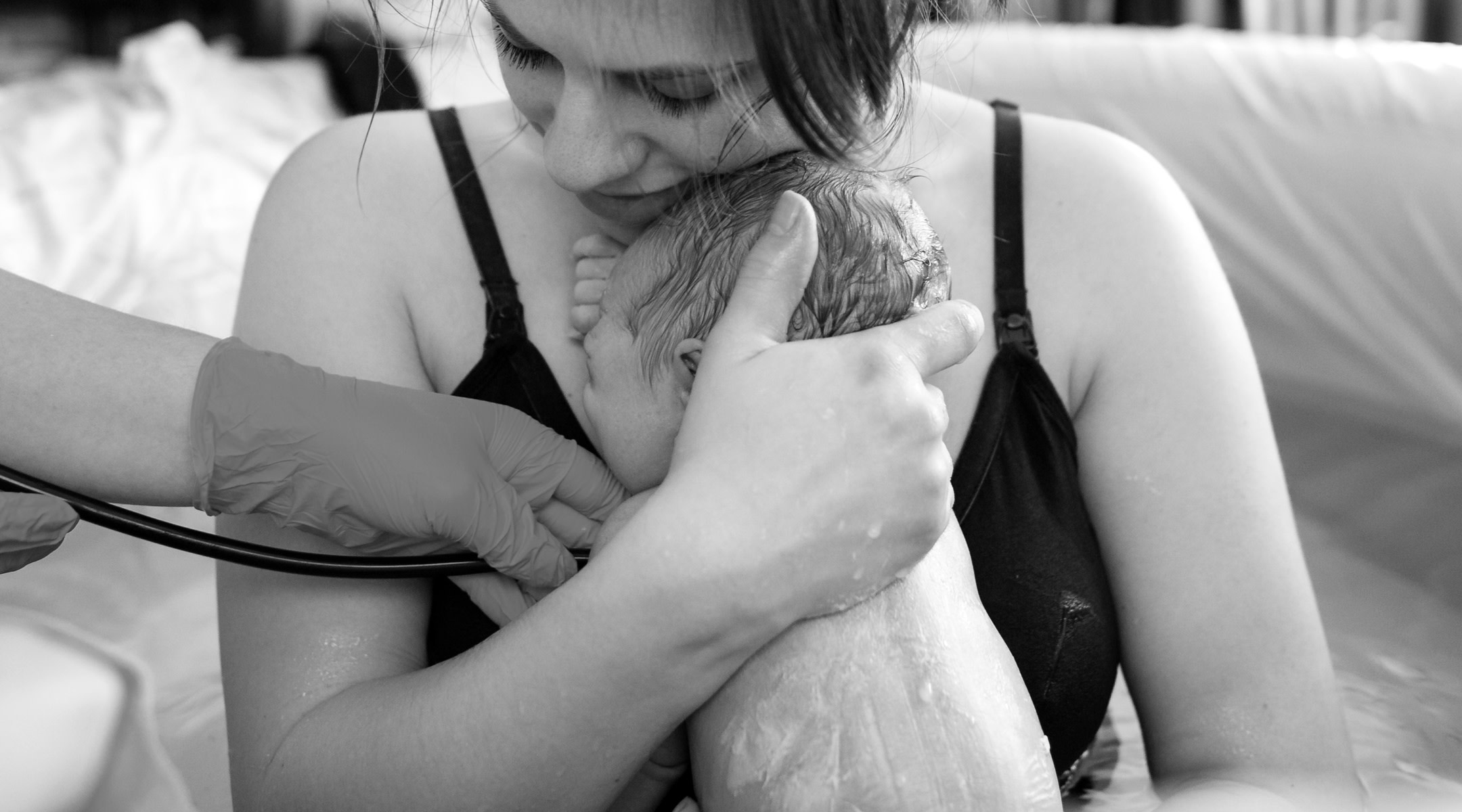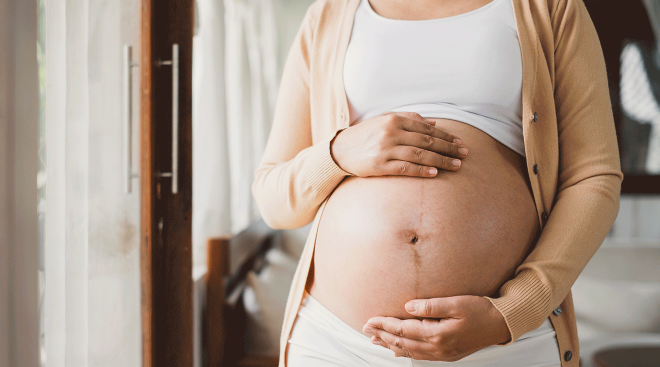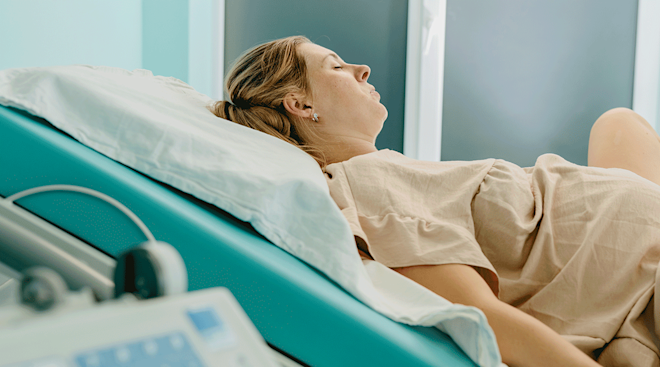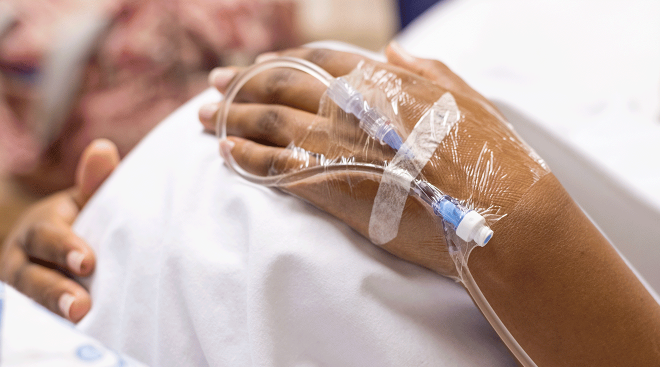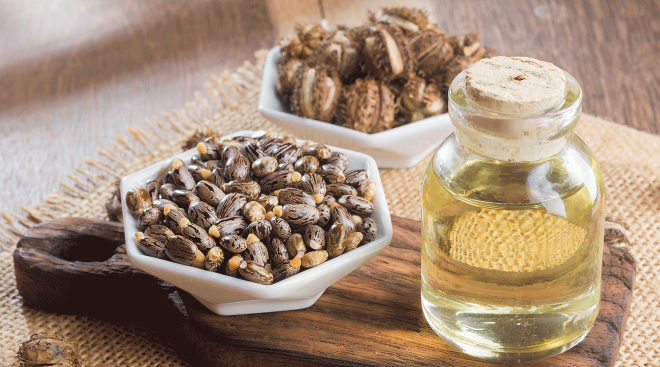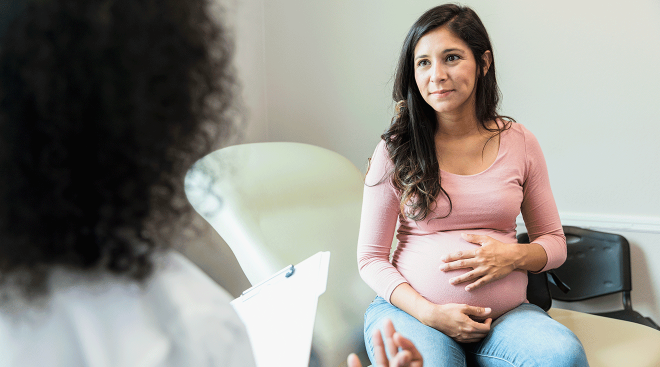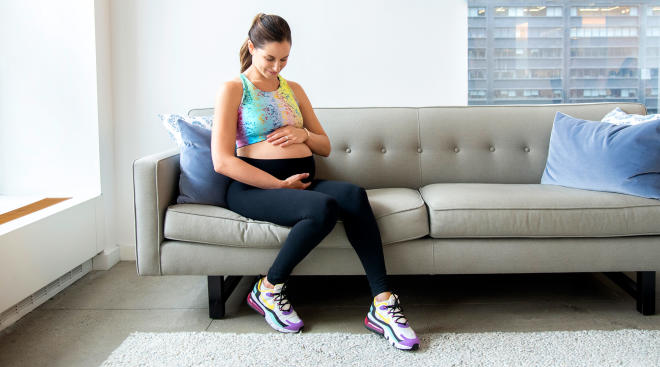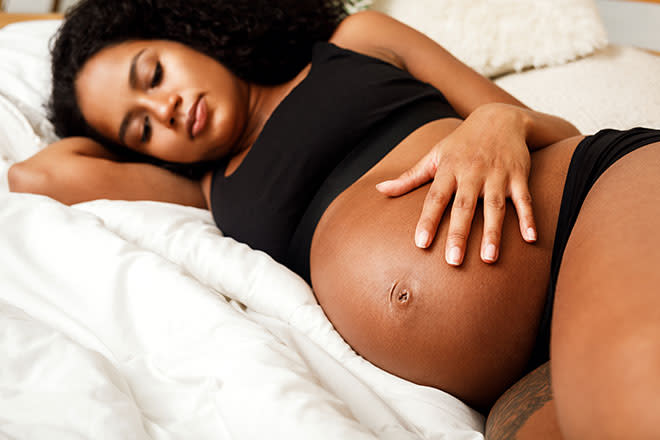Alternative Birth Methods Worth Considering
While the on-your-back, epidural-numbed labor has long been the American standard, some women are opting for less conventional birth methods and pain control techniques—and even moving out of the hospital room. If that sounds intriguing to you, read on to learn more about alternative birthing venues and pain management methods that can help make the birthing experience you envision a reality.
The hospital isn’t your only delivery location option. These alternative spaces can provide a unique birth experience for low-risk moms-to-be who are carrying a single non-breech baby.
Birth Centers
Walk into a birth center and you’ll be greeted with amenities that remind you of the comforts of home, from a welcoming bed to a walk-in shower. You’ll also notice some objects you might not have at the house—like a birthing tub, birthing balls (similar to large, inflated gym balls) and a selection of aromatherapeutic oils. The goal of these centers is to help you feel relaxed throughout labor and delivery while providing you with a number of tools that can help make giving birth easier. “In a hospital, the first thing you see is the bed, and you’re expected to get into it and that’s where you stay for the delivery. But we’ve made our rooms an active space where you can get into different positions throughout labor and the delivery, depending on what works for you,” says Julie Birdsong, RN, a certified nurse-midwife at San Francisco Birth Center.
Each birth center is different, so you’ll want to visit the one you’re thinking about using early in your pregnancy to make sure it has the amenities you want. Some are freestanding and staffed solely by certified nurse-midwives. These tend to offer more natural forms of pain management, including massage, breathing exercises and nitrous oxide (laughing gas), though they may also have IV pain medication like fentanyl or nubain. Other centers, however, are attached to a hospital and offer ob-gyn care as well as epidurals. Either way, all birth centers should have an associated ob-gyn or hospital nearby so a woman can be transferred if needed (for instance, in the case of a c-section). It’s interesting to note, however, that most women do end up delivering at the center. In fact, one study found that 84 percent of women who planned to labor at a birth center ended up delivering there (4 percent were transferred to a hospital before they were even admitted to the center and 12 percent were transferred during labor).
Many women opt for a birth center not only because they want to have a more natural birth, but also because they’re looking for an intimate experience. Once you choose to use a birth center, you’ll receive your prenatal care there, and some provide postpartum visits as well. “Compared with many hospitals, we get to spend a lot more time with clients,” Birdsong says. “Women like being able to get to know the person who will be attending their birth.”
Home
This option isn’t common in the US—with less than 1 percent of births taking place at home—but home birth stories do pop up in the media thanks to celebs who skip the hospital, like Julianne Moore, Mayim Bialik, Alyson Hannigan and Cindy Crawford. While home births are legal in every state, doctors stress that it isn’t as safe a setting as a hospital or birth center. According to the American Congress of Obstetricians and Gynecologists, while home birth is associated with fewer maternal interventions compared to a planned hospital birth (such as labor induction and c-sections), it holds more than twice the risk for perinatal death—or death within the first week of life. Others, however, argue that home births can be a safe option, noting that most homebirth midwives have a backup ob-gyn or hospital to go to in the case of an emergency.
Advocates also say it can be a more pleasant experience for the mother. “Women tend to be more relaxed and comfortable because they know their surroundings and feel safe,” says Rebecca Garrett-Brown, CNM, a certified nurse-midwife at the University of California San Diego Medical Center. “In the home environment, you’re more likely to treat birth as a normal, natural, physiological process.”
Whether you decide to deliver at home, in a birth center or even at a hospital, these pain management techniques can help make your labor and delivery experience more tolerable.
Water birth
Lounging in a warm tub or bubbling Jacuzzi is a relaxing, feel-good experience—and, for many women, that doesn’t change when you’re about to give birth. With a water birth—also known as hydrotherapy—you progress through labor in a waist-deep pool of clean, warm (typically a few degrees higher than body temperature) water. While more hospitals are now offering this option, they’re a mainstay at most birthing centers and you can even rent a portable tub for your living room.
Hydrotherapy’s biggest benefit is that it can take the edge off the pain. “The buoyancy helps with movement and discomfort,” Birdsong says. In fact, hanging out in a birthing pool during the first stage of labor (when the cervix is dilating but hasn’t reached 10 centimeters yet) has been shown to decrease the use of an epidural. Some women choose to hop out of the bath once they’ve dilated, but with a true water birth, you stay in the tub until you deliver the baby. (Don’t worry, the doctor or midwife brings the baby up out of the water right away.) “It’s a gentle way for babies to make the transition from inside the womb to the outside world,” Birdsong says.
Hypnosis
Think you could talk your brain out of feeling the pain of labor? Some women claim that self-hypnosis methods (or HypnoBirthing) take the “ouch!” out of childbirth. The technique uses audio, visualization, meditation and relaxation techniques to help make labor more comfortable. “The curriculum starts early in pregnancy, and women listen to meditation-type tracks and picture giving birth in a peaceful and relaxed state. Then they can access that meditative state in a moment of intensity, like labor,” Birdsong says. “It gets the brain out of the way so that the body can just labor.” While the research is mixed (some studies show that hypnosis reduces the overall use of pain meds during labor, but not epidurals), many women say it’s worked wonders during their deliveries.
Acupuncture and acupressure
Acupuncture is a traditional Chinese method of stimulating points on the body (usually with strategically placed thin needles) to help balance the natural flow of energy (or qi). Acupressure stimulates similar spots manually (such as by pressing on them with the hand or fingertips). People have used the practices to help with pain, digestion, sleep issues and more, and now women are taking acupuncture and acupressure to the delivery room. “They’re usually used to help labor progress and to aid with painful contractions,” Garrett-Brown says. More research needs to be done, but certain studies have shown that the needles can in fact make labor easier: A new report in the journal BMJ Open suggests that acupressure is associated with a reduction in epidural rates, so for women looking for a more natural birth experience, this could be another pain-management tool to consider.
Updated December 2017
Please note: The Bump and the materials and information it contains are not intended to, and do not constitute, medical or other health advice or diagnosis and should not be used as such. You should always consult with a qualified physician or health professional about your specific circumstances.
Plus, more from The Bump:
Navigate forward to interact with the calendar and select a date. Press the question mark key to get the keyboard shortcuts for changing dates.
































